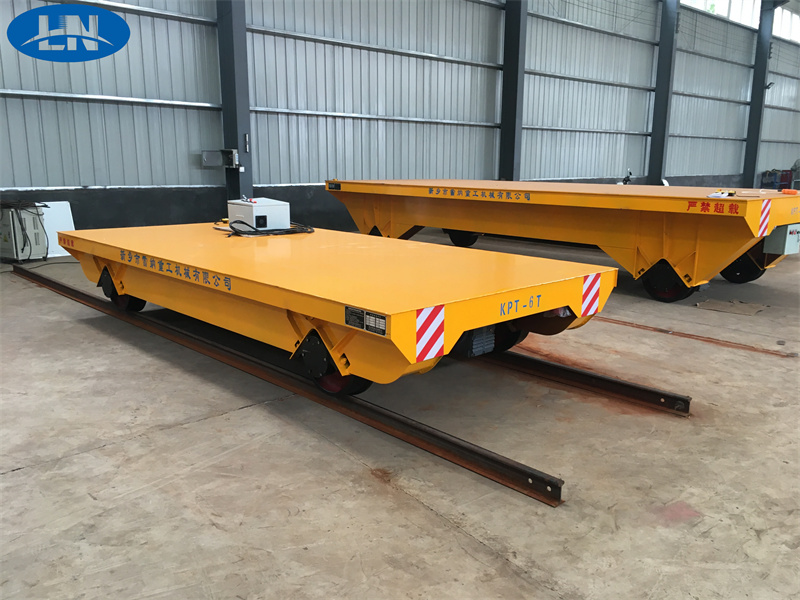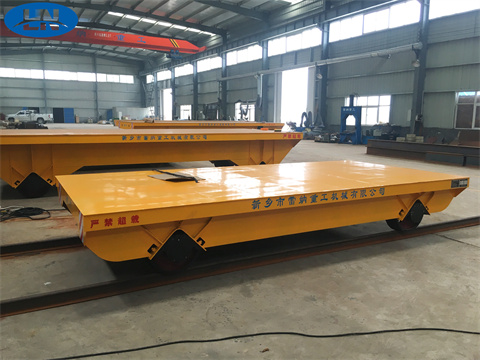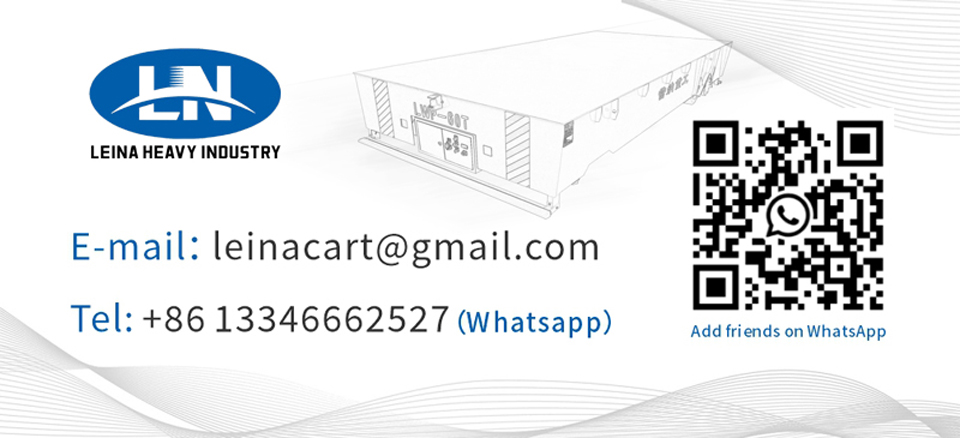

Rail electric transfer carts are heavy-duty transport and handling equipment driven by electricity, and their load-bearing capacity can reach thousands of tons. The structure itself is simple, mainly composed of an electronic control system, a walking wheel system, a power supply system, a drive system and a frame. More importantly, it is suitable for a wide range of working conditions, including: drying rooms, paint rooms, paper mills, railways, brick factories, etc. It is a common handling equipment in industrial activities.
Many users have asked when consulting, how does the electric rail transfer cart brake? Is it like a car? Here we will give an answer, hoping to help everyone.
There are generally two common braking methods for rail electric transfer carts:
1. Use the electromagnetic brake of the electric rail transfer cart to brake. The electromagnetic brake is an important accessory of the electric transfer cart. It is a connector that transfers the torque of the active side to the passive side, and can be freely fused, cut or braked as needed. It is called an electromagnetic brake because it uses magnetic field force as power.
Mechanical parts, usually called brakes, are used to terminate or slow down moving parts in machinery. The brake is mainly composed of a brake frame, a brake component and an operating device. The resistance torque that must be applied when the mechanical running parts stop or slow down is called the braking torque. The braking torque is the basis for the design and use of brakes, and the size is determined by the type of machinery and the working requirements.
The performance of the friction material (brake component) commonly used in the brake is directly related to the braking process, and the important factors affecting its performance are the operating temperature and temperature rate. The friction material should have high and stable friction resistance and good wear resistance. Friction materials are divided into metal and non-metal. The commonly used friction materials for the former are pig iron, steel, brass and powder, and the latter are leather, rubber, wood and asbestos. This series of electric transfer cart brake components have compact structure, simple operation, sensitive response, long service life, reliable application, and easy to achieve remote control.
2. The electric rail transfer cart adopts a hydraulic brake, which is a braking device that achieves braking by hydraulically driving the brake block to get stuck on the brake wheel. It is widely used in the deceleration or parking brake of mechanical drive mechanisms such as lifting, metallurgy, mining, ports, ports, and construction machinery. Features of hydraulic brakes for electric transfer cart accessories: The swing hinge is equipped with self-lubricating bearings, which have high transmission efficiency and long service life, and do not require lubrication when in use!
Features of hydraulic brake rail electric transfer cart accessories:
1. The characteristics are safe and reliable, the braking is stable, and the action frequency is high.
2. When the brake pad is damaged, the automatic compensation device can realize automatic compensation;
3. Manually loosen the gate for easy maintenance; equipped with torque equipment such as interlocking, always keep the torque of the tiles on both sides equal during use, and avoid the brake pad on one side from floating against the brake wheel due to uneven torque;
4. A brake torsion spring is set in the spring tube, and a brake torque ruler is provided on one side for easy and intuitive adjustment.
5. Use card-type plug-in asbestos brake pads and brake shoes. Safe and reliable, easy to replace, convenient.




